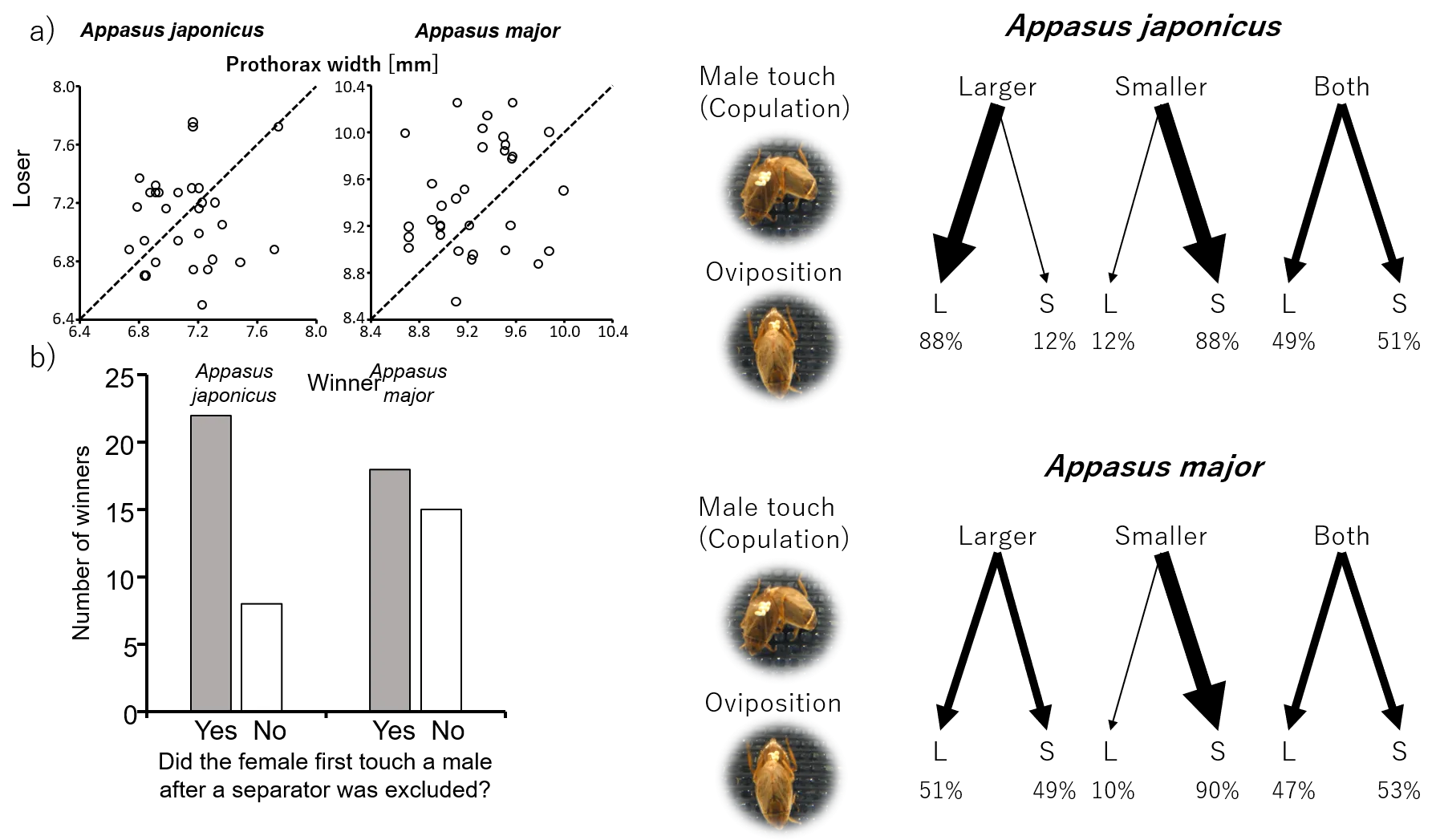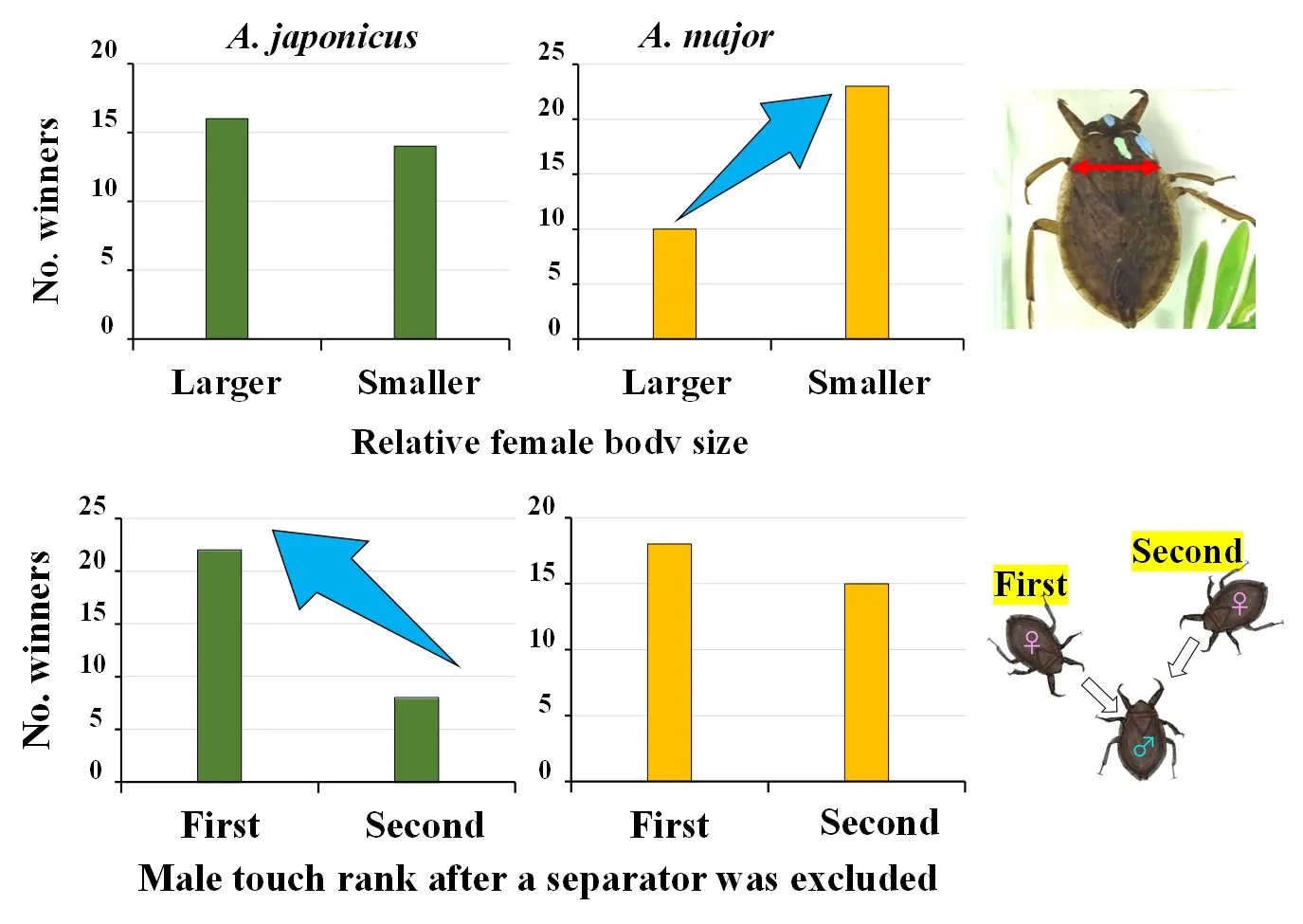

Female–female competition in two giant water bug species
A research group including Associate Professor Shin-ya Ohba of the Faculty of Education at Nagasaki University, Ms. Rei Hayashida (a 2022 graduate of the same faculty), and Assistant Professor Tomoya Suzuki of the Faculty of Human Environmental Studies at Hiroshima Shudo University has revealed that females of giant water bugs (Appasus japonicus and Appasus major), in which males independently care for eggs, compete for access to the male’s back as an oviposition site. The study found species-specific differences in reproductive behavior: in A. japonicus, females that first contact a male are more likely to succeed in oviposition, while in A. major, smaller females tend to be more successful. These results demonstrate the dynamics of female–female competition in insect species where males provide parental care and suggest that even closely related species exhibit distinct reproductive strategies.
In several animals, males compete for females for reproduction. However, females of some animals aggressively compete among females for males. Belostomatidae (Heteroptera) females lay eggs on the backs of males, who then care for them until hatching. Multiple females may lay eggs on one male and, leading to competition for the limited resource of ‘the male’s back’. However, the female traits that confer an advantage in egg-laying are unclear. Herein, we investigated the traits, such as body size, live weight and behaviour of females, that are advantageous for oviposition in two Appasus species, shedding light on the characteristics advantageous in inter-female competition. In Appasus japonicus, females which first touched a male were considered more favourable for egg laying, whereas in Appasus major, females with smaller body sizes were considered more favourable. Detailed observations of egg-laying behaviour revealed that smaller females of A. major interrupted and laid eggs on males more often than the larger ones after mating. Smaller females, which lay fewer eggs in their lifetime, are presumed to become active during initial egg laying because the males do not allow additional egg laying when the number of caring eggs increases, even if more space is present on their backs. Contrastingly, the females of A. japonicus do not exhibit as much female–female competition as the females of A. major. The A. japonicus has an abundant oviposition resource as ‘male backs’ because they lay eggs until the backs of the males are filled. Therefore, aggression in A. japonicus females is less pronounced compared to A. major, suggesting a lack of distinct characteristics for this species. This study sheds light on the benefits of smaller females in inter-female competition and demonstrates for the first time that traits promoting such female competition vary even among closely related species.
Keywords: aquatic insects; mate choice, sexual selection; sex role reversal


Journal: Ecological Entomology
Title: Female–female competition in two giant water bug species
Authors:
Biological Laboratory, Faculty of Education, Nagasaki University, Nagasaki, Japan
Biological Laboratory, Faculty of Education, Nagasaki University, Nagasaki, Japan
Faculty of Human Environmental Studies, Hiroshima Shudo University, Hiroshima, Japan
Correspondence Author: Shin-ya Ohba (ORCID: 0000-0003-3854-0902)
DOI: https://doi.org/10.1111/een.13454
Publication Date: 19 May 2025
For more details, please see the full article published in Ecological Entomology.